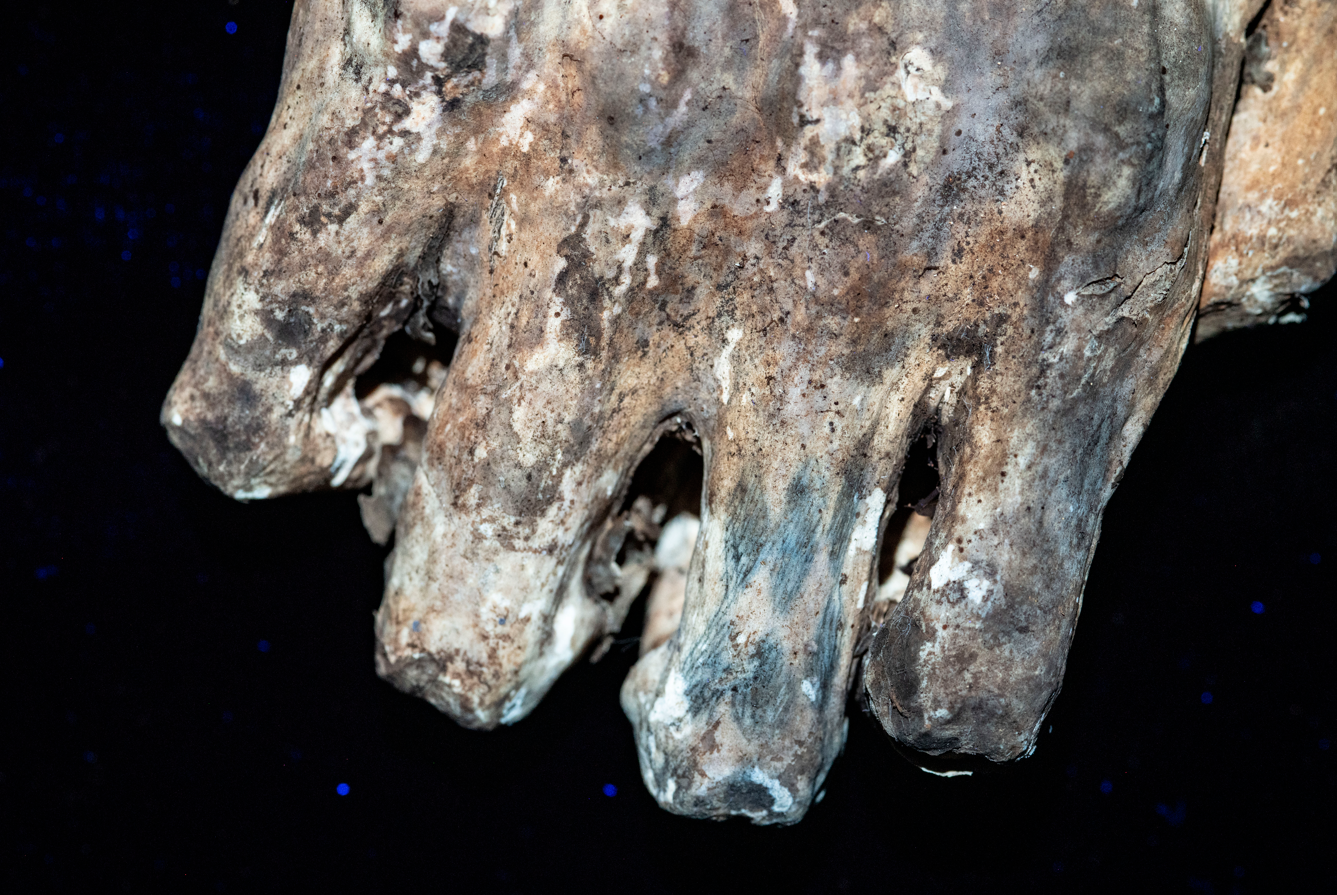Delicately detailed tattoos have been discovered etched onto the bodies of 1,200-year-old mummies uncovered in Peru. Although the passing of centuries has faded these once-living artworks, new research is uncovering the remarkable skill and complexity with which they were created.
The body art is found on the mummified remains of individuals from the Chancay culture, a pre-Hispanic civilization that thrived along the coast of present-day Peru.
The majority of the designs feature geometric patterns, often involving triangular shapes, although a small quantity of the tattoos depicts other forms, including animals. Based on other archaeological discoveries from the region, it’s thought the ancient artists would “tap” ink into the skin using a cactus needle or sharpened animal bone.
They are likely associated with individuals of higher societal status or perhaps created as part of a special ceremony or ritual.
Michael Pittman
While the beauty and significance of Chancay tattoos have long been admired, new imaging techniques are now revealing just how remarkably skilled they were in this form of body art.
With the help of laser-stimulated fluorescence (LSF) technology, researchers at the Chinese University of Hong Kong were able to create high-contrast fluorescence images of the preserved skin, revealing that the ink was applied with an incredible level of precision. The fine-line tattoos had details as narrow as 0.1 to 0.2 millimeters – even more precise than today’s tattooing methods.

The arm of an ancient Chancay person covered in fine-line tattoos.
Image courtesy of Michael Pittman
“The high-detail tattoos we uncovered using LSF technology was a world first in the field of ancient tattoo research,” Michael Pittman, lead study author from the School of Life Sciences at the Chinese University of Hong Kong, told IFLScience.
The intricate level of detail suggests that the Chancay regarded tattooing with great importance. The researchers note that only a small number of individuals from this society were adorned with such detailed tattoos, suggesting that they were reserved for a “special” or elite subset of the community.
“There are only a few individuals out of the 100-plus individuals we studied that have them, suggesting they were limited to subsets of the Chancay population,” added Dr Pittman.
“Their level of detail would have required more skill, time, and patience to produce compared to other known Chancay tattoos, suggesting that they were comparatively more significant. Future research is needed to determine the specific significance of these high-detail tattoos, but they are likely associated with individuals of higher societal status or perhaps created as part of a special ceremony or ritual,” he explained.

Knuckle tattoos of the Chancay culture.
Image courtesy of Michael Pittman
Along with their tattoos, the Chancay are known for textiles and pottery, which were transported across the surrounding region through extensive trade networks. Interestingly, these mediums feature very similar geometric designs to the tattoos – although, if anything, the body art is actually more detailed and ornate.
“The fact that the most detailed Chancay art now belongs to highly detailed tattoos suggests that tattoos were an important artform to the Chancay with some appearing to have special significance to them,” said Dr Pittman.
The study is published in the journal Proceedings of the National Academy of Sciences.
Source Link: Lasers Reveal Ultrafine Line Tattoos On 1,200-Year-Old Mummies In Peru